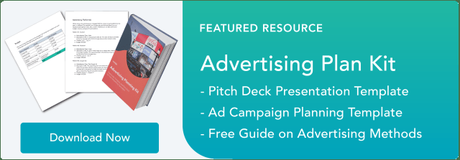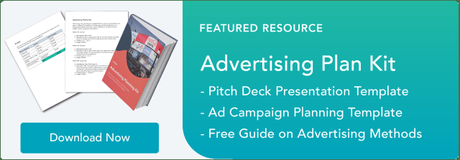Let's start with an example to see what ad fatigue is.
Think about when you changed TV channel because you saw that equal ad ten times that night.
Alternatively, think of situations where you are so tired of listening to a particular commercial that you turn off your radio completely.
These are both examples of ad fatigue - a problem that occurs when users get too used to a particular type of ad, reducing its effectiveness.
As a marketer, it is crucial that we continuously deliver fresh, high quality, targeted ads to ensure that your content continues to inspire your audience rather than cause frustration.
Below we will explain what ad fatigue is, what symptoms are common symptoms of ad fatigue, and how to fix them. Let's dive in.


What is ad fatigue?
Ad fatigue occurs when your audience sees your ads so often that they get bored and stop paying attention.
This in turn makes your campaigns less effective, removes users from the sales funnel, and ultimately affects the bottom line.
Ultimately, the purpose of advertising is to turn new viewers into customers. This can't happen if you're outbidding your ads to the same viewers or producing poor quality ads.
Detecting ad fatigue early on can help you reverse the impact by creating new campaigns. It can be as simple as changing the image you use in your Facebook ads, or using the Google ad features to customize the text to suit your audience's habits and preferences.
Alternatively, you may need to use a strategic schedule to ensure that your ads are only shown at the most relevant times so you can get the best possible ROI.
Either way, we have some tips and tricks to help you maximize your marketing success. Let's examine these next.
3 signs your audience is tired of ads
You may suspect that ad fatigue is affecting your campaigns, but you are not entirely sure how to tell.
Here are some common symptoms that can occur when your audience is fed up with your ads:
1.Lower click-through rates (CTRs)
Your click-through rate (CTR) is arguably one of the most important metrics for tracking and combating ad fatigue. Click-through rate shows how engaging your ad is - and especially, whether it's compelling enough to force visitors to explore your brand further.
For example, if your ad has a 10% discount on your new fall shoe line and has a high click-through rate, you can assume that the ad is effectively encouraging visitors to stop their activity and take a look at your new discount products.
If your CTR numbers drop significantly over time, it could be because you are boring your audience and they are no longer ready to engage with your brand.
2. Less engagement
Speaking of engagement, did you check in to see how social media followers interact with your business?
If people are casually looking at your ads and moving on, they're not really engaged - and an engaged audience is key to leaving comments and approvals. If you're seeing lower social engagement, it could be a sign that you've inflicted ad fatigue on your followers in a way that makes them less motivated to interact with them all Their content: both paid and organic.
3. Less impressions
Social media algorithms are set up so that only the most relevant content is displayed on top. The same goes for advertisements. Paid social media ads will only run if they apply to that particular user. This means that people who don't interact with your paid posts are less likely to see them in the future. If your impressions have decreased over time, it may be time to revamp your ad campaigns.
As with most of life's obstacles, you can't fix ad fatigue until you realize it's a problem. Continuously reviewing the above metrics over time will give you a better understanding of how your audience feels about your brand. Once you understand that ad fatigue may be responsible for less than great campaign performance, you can make small but strategic improvements to breathe new life into your marketing strategy.
Now let's take a look at some potential cures for ad fatigue.
How can you cure ad fatigue?
It doesn't always take a lot of work to reduce ad fatigue. Sometimes simple changes are all you need to update the look and feel of your advertisement.
Here are three steps you can take to update your campaigns so that your audience is more interested in the content you are sharing.
1. Update the background color of your display ads.
Everyone needs a change of scene every now and then.
We are often exposed to the same images over and over again, which can be stressful and force us to ignore the ads the next time we see them.
Display ads can be especially prone to ad fatigue because you run the same ad multiple times to the same audience.
Fortunately, there is a simple solution to avoiding this conundrum: changing the background color of your ads can keep your audience interested in your content. This small change is often enough to keep your ads looking brand new.
2. Customize your ads using ad customization programs.
Google's ad customization programs have been around for a number of years. They are powerful tools for increasing conversions and keeping your ad updated.
If you run Pay Per Click (PPC) ads you may not be aware of the power of customizers, but it is time to change that. Ultimately, Google's ad customizers ensure that your ads stay fresh and relevant while creating a sense of urgency that will draw your followers into clicking your call to action.
In short, ad customizers dynamically update your ads with content that is tailored to your target audience and deliver that content in a time-sensitive manner.
For example, let's say you have a year-end limited-time promotion. With ad customizers, you can get your ads known in real time when they're most relevant to people. You can use this feature for one-off situations, recurring events, or site-specific occasions. Better yet, ad customization is pretty easy once you set it up.
3. Rotate your ads frequently.
As a marketer, you know that schedules are important: you need a clear plan to keep all of your campaigns on track.
However, showing an ad to the same people too often can easily lead to ad fatigue.
Combat this problem by creating and rotating multiple ads. These versions can all deliver the same content, but should have differences in text or design. This is a great way to keep your content up to date and optimize your campaigns based on the best ad performance. (A / B testing these ads can be an effective option to make sure you're delivering the best performing ads to your visitors.)
Note that when rotating your ads, you should also make sure that you are delivering your messages on only the most relevant topics times of the day (and on the most relevant days). Include your rotations on your marketing calendar for streamlined execution and better results.
4. Monitor your campaigns.
It is not enough to write a new copy or change your motif. You need to keep track of your ads to make sure your updated campaigns are not getting tired. If you don't monitor the performance of your ads, you won't be able to tell if your target audience has lost interest in them.
To avoid the fatigue of ads on your radar, you need to monitor frequency (the number of times people see your ads) and click-through rate (the number of times people click your ads divided by the number of impressions). This allows you to spot ad fatigue early on and adjust your strategy accordingly.
How a Marketing Agency Healed Ad Fatigue
Zero Gravity Marketing (ZGM), a full-service digital marketing agency based in Connecticut, has been put to the test when it comes to curing ad fatigue for one of their clients. In this case study, a customer ran a paid social media campaign and the ad variants hadn't changed in more than three months.
ZGM took a strategic approach to improving organic traffic and turning visitors into loyal customers. To reduce customer audience fatigue, the agency first identified and scaled back ineffective campaigns. Then they did the following steps to update the existing PPC strategy:
- Keyword research carried out: ZGM's Search Engine Optimization (SEO) team conducted keyword research to identify new, more effective searches related to the client's brand. The PPC team then used these terms in the advertisements.
- The ad content has been rewritten: ZGM relied on the new keyword research and updated the campaign news to be more relevant to the target audience.
- Set up target tracking: To better monitor progress, the team has also set up target tracking for social media button clicks, filling out account login forms, and more.
The results? ZGM's strategy quickly resulted in significant improvements in campaign ROI. In just three months, the customer saw organic traffic grow 17% and up 10% year over year.
No matter what type of business you run, your ultimate goal is to increase brand awareness and turn leads into loyal customers. Of course, one of the best ways to do this is with fresh, relevant paid ads. Update your campaigns from time to time to make sure your audience remains engaged as you advance your digital advertising strategy. That way, you can avoid the negative effects of ad fatigue and achieve greater marketing success.


